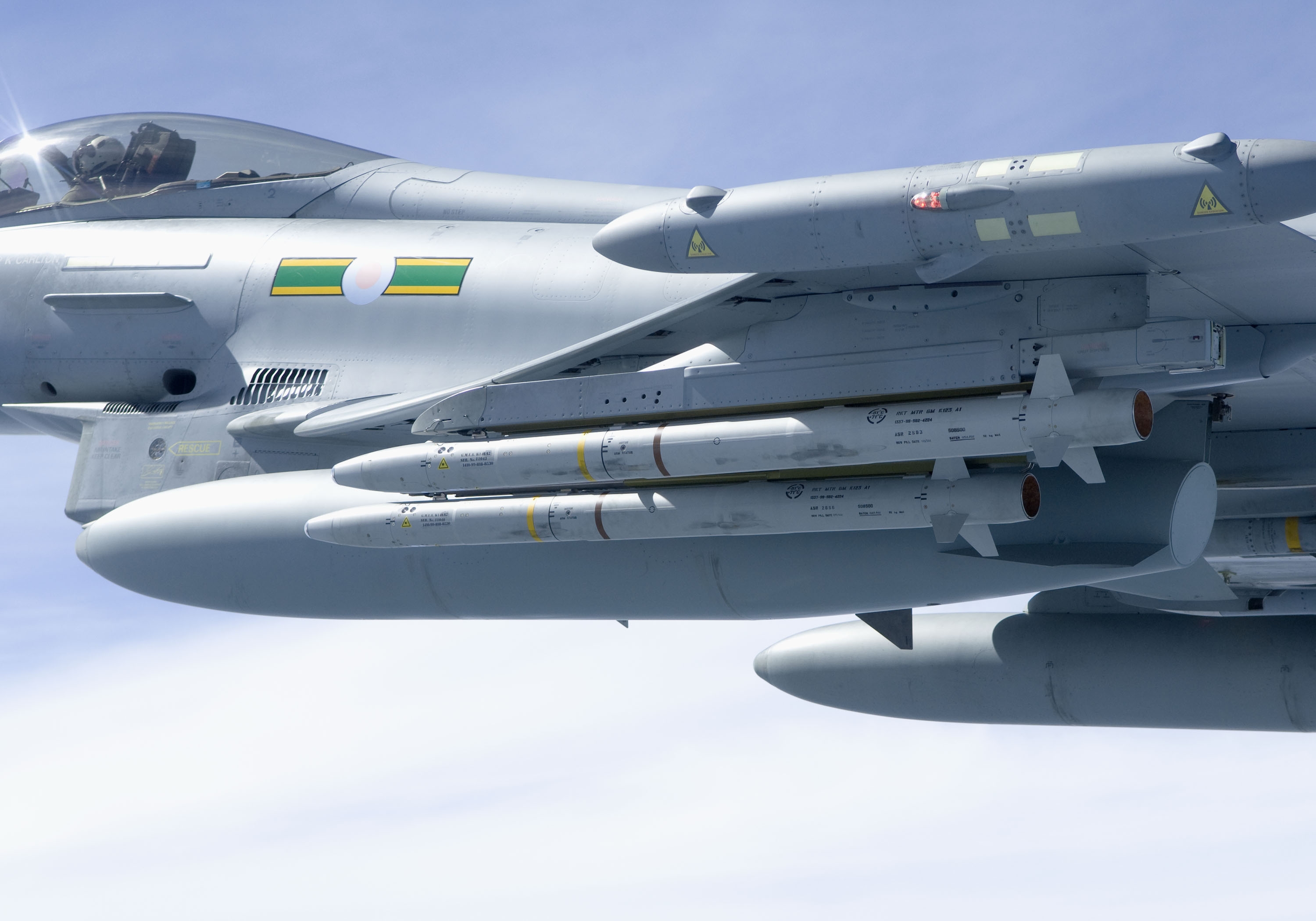With the Ukraine war already being hailed as a laboratory of innovation and military development, a brand-new MBDA-made mobile ground-based AIM-132 ASRAAM (Advanced Short-Range Air-to-Air Missile) air defense system has been spotted in the country.
MUST READ: Led By Tu-95MS Bombers, Russia Conducts Massive ‘Wave Attack’ On Su-24MR Airbase To Tame Ukraine
However, there’s a catch: the AIM-132 is a very potent air-to-air missile modified for launch from the ground.
A popular group that goes by the name ‘Ukraine Weapons Tracker’ posted on social media site X, saying: “More of the fruits of British Assistance to the Ukrainian Army- MBDA ASRAAM IR anti-aircraft missiles mounted on a Supacat HMT truck to provide a mobile air-defense platform. When fired from aircraft, the ASRAAM can hit targets more than 25km away.”
According to images that appeared on social media and accessed by the media, a 6×6 Supacat all-terrain truck chassis was seen with a twin-rail launcher for a pair of ASRAAMs mounted at the rear end. It is a British All Terrain mobility platform sent to Ukraine.
There also seems to be a sensor turret positioned on a pylon near the cab, potentially telescoping to lift it high over the truck. Military experts noted it could be a target-cueing sensor turret with electro-optical and infrared capabilities. Some say that it might also have a short-range radar capability.
Based on comments made by an unknown Ukrainian lieutenant colonel working in Kyiv’s air defense command, The Times reported that the UK Ministry of Defense (MoD) had sent a few Supacat trucks rigged by British engineers to fire ASRAAM.
According to the report, these systems “are primarily deployed to intercept swarms of Russia’s Iranian-supplied Shahed suicide drones, but some of the systems are also supporting Ukraine’s counteroffensive.”
#Ukraine: More of the fruits of British Assistance 🇬🇧 to the Ukrainian Army- MBDA ASRAAM IR anti-aircraft missiles mounted on a Supacat HMT truck to provide a mobile air-defense platform.
When fired from aircraft, the ASRAAM can hit targets more than 25km away. pic.twitter.com/nW1r96Aau3
— 🇺🇦 Ukraine Weapons Tracker (@UAWeapons) August 4, 2023
Although EurAsian Times could not independently verify these claims, the UK has consistently supplied military aid to Ukraine and assisted its troops to innovate and adapt to newer technology.
The ongoing war has also seen Kyiv integrating different classes of weapons to combat the threat posed by Russia and make fighting more of a level playing field.
In addition, the ad-hoc system further illustrates the many different cutting-edge weapons the UK has given to Kyiv. To combat a revived Russian aircraft threat on the front lines, urgent demand for short-range air defenses (SHORADs) will be met.
The Times claimed that these systems had been primarily deployed to intercept swarms of Russia’s Iranian-supplied Shahed suicide drones, but some of the systems are also supporting Ukraine’s counteroffensive. This means these make-shift mobile air defense units are deployed on the frontlines.
While the exact capability of this unique system and its role remains unclear for now, it has been vetted by experts that it could be a useful development given that Russia’s missile onslaught has only intensified in the wake of Ukraine’s counteroffensive.
Kyiv has been pleading with its NATO partners for more air defense capabilities to keep up with the missiles, drones, and other hostile aircraft wreaking havoc on sophisticated Western equipment deployed at the frontline.
What Does This Unique System Do?
Since 1988, the British Army’s airborne and air-mobile forces have used this compact, 6-wheeled vehicle. The Supacat can go over rugged terrain while transporting up to eight soldiers (plus two crew), a typical NATO pallet, or other supplies because it is amphibious and has low ground pressure.
The Supacat’s great mobility can defend important immobile objects and operate close to the front lines. This capability allows it to launch swift attacks along the frontlines where Russian forces constantly fly its ATGM-firing Ka-52 Alligators.
Next comes the ASRAAM that has been mounted on the Supacat. The MBDA UK-produced Advanced Short Range Air-to-Air Missile (ASRAAM), also referred to by its American name AIM-132, is an imaging, infrared-homing air-to-air missile intended for close-quarters combat.
In 2017, ASRAAMs were fired from F-35 fighters at Naval Air Station Patuxent River and Edwards Air Force Base in the US. This represented the first time that a UK-designed missile had been fired from an F-35 jet and the first time any non-US missile had ever been fired from the warplane.
When mounted on an aircraft, the pilot can shoot the ASRAAM and turn away before the enemy aircraft is close enough to fire. It flies at speeds much above Mach 3 at distances of more than 25 kilometers or 16 miles. In addition, it still has excellent maneuverability, thanks to body lift technology and tail control.
A highly maneuverable, heat-seeking, air-to-air missile, ASRAAM travels at great speeds and is a “fire-and-forget” missile. It was designed to detect and launch against targets at far greater ranges to shoot down the adversary before it comes close enough to be able to fire its munition.

The ASRAAM is 9 feet 6 inches long, weighs a little under 200 pounds, and has a 6.5-inch diameter. It shares many similarities with the AIM-9X Sidewinder. However, it performs slightly differently and even more so when mounted on a truck chassis instead of an aircraft pylon.
Although other platforms are likely providing targeting coordinates, it’s currently unknown what kind of sensors, other than the EO/IR turret shown on the truck, may be used to discover and acquire the targets in the first place.
The ASRAAM can also be used in lock-on after launch (LOAL) mode, which enables the transmission of targeting information to the missile via datalink after it has left the rail. It has been noted that this may be essential to working with this specific system.
Despite the details about this new British system in Ukraine being meager, it has been hailed as a welcome addition to the Ukrainian military given that Kyiv’s forces can do with whatever SHORAD capabilities they can acquire while the counteroffensive proceeds.
The shortage of missile supplies is also threatening to derail Ukraine’s counteroffensive. The army had run out of munitions needed to dislodge the Russians at the end of May, forcing troops to ‘storm fortified points head-on.’
- Contact the author at sakshi.tiwari9555 (at) gmail.com
- Follow EurAsian Times on Google News




